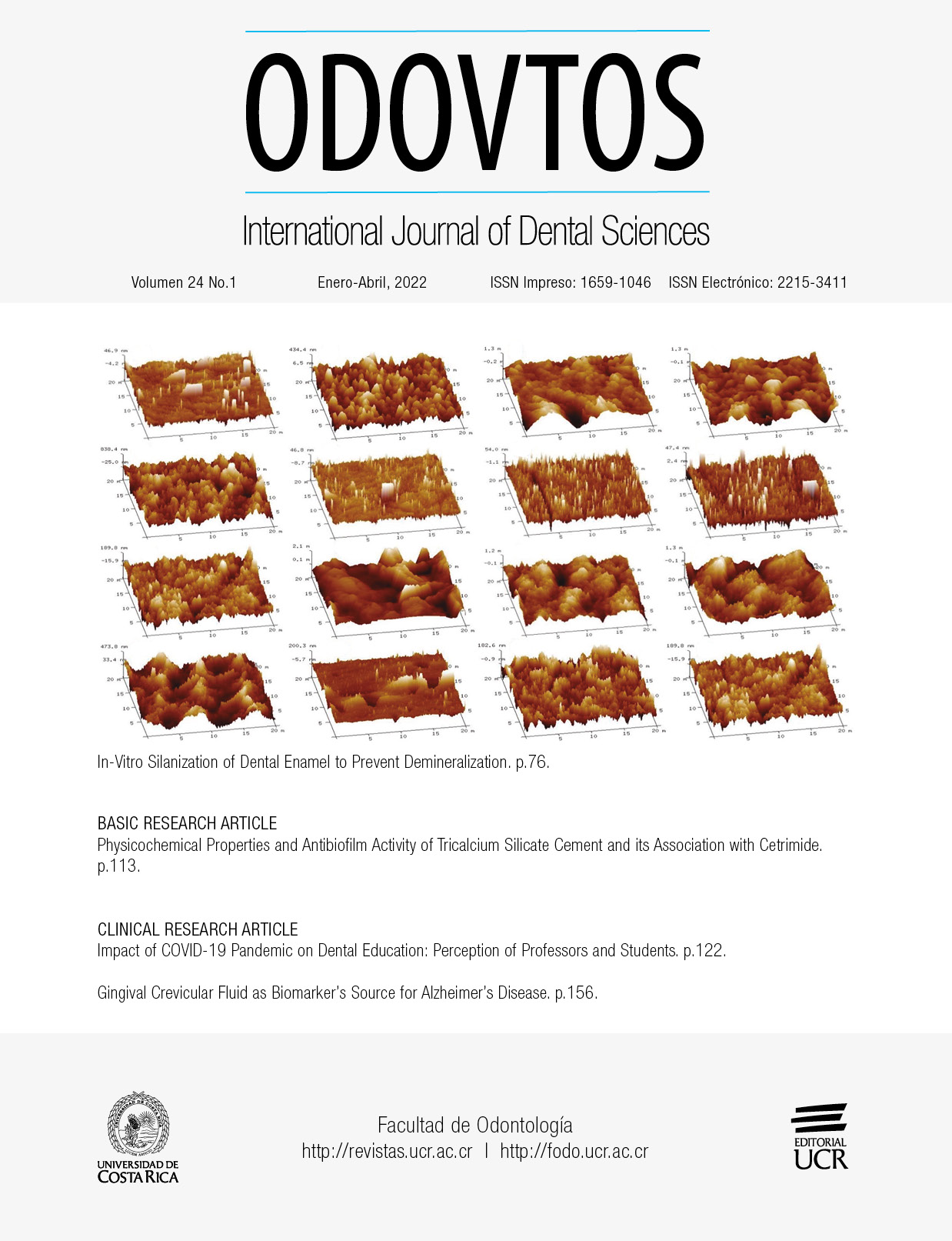Resumen
Este estudio evaluó efectos de los modos alternativos de aplicación de adhesivos de autograbado en la resistencia de la unión microtensil entre resina y dentina (µTBS) de tres adhesivos universales de concepto "no espera" disponibles en el mercado.Se utilizaron terceros molares humanos impactados que fueron extraídos.Las superficies planas se prepararon en la dentina coronal media y se prepararon con un papel SiC de 600 granos.Los tres adhesivos universales que se utilizaron son los siguientes:Clearfil Universal Quick Bond (CUQ,Kuraray Noritake,Japón), G-Premio Bond (GPB,GC Corp,Japón), y un adhesivo universal autopolimerizable "Tokuyama Universal Bond" (TUB;Tokuyama Dental,Japón).Se aplicaron los adhesivos y se sometieron inmediatamente a un secado al aire; se aplicaron los adhesivos y se esperó 10 segundos; o se frotaron los adhesivos durante 10 segundos.Luego se aplicó resina compuesta a la superficie dentinaria,se fotopolimerizó.Después de su almacenamiento en agua destilada a 37°C durante 24h, todos los dientes unidos se cortaron en secciones de 1mm² utilizando una sierra de diamante de baja velocidad (Micracut 125Low Speed Precision Cutter, Metkon, Bursa,Turquía) bajo agua corriente (n=15).Las secciones fueron sometidas a una fuerza de tracción a una velocidad de cruceta de 1mm/min en una máquina de prueba universal (Microtensile Tester,Bisco,IL,USA) y se midieron los valores de µTBS.Los datos fueron analizados utilizando la prueba de Kruskal-Wallis y la prueba U de Mann-Whitney.Los modos de falla fueron analizados bajo un estereomicroscopio.El prolongado tiempo de aplicación afectó significativamente a los µTBS (p<0,005).Se observó un aumento significativo de µTBS en la aplicación activa para el CUQ y el GPB.El TUB con una aplicación activa tuvo un valor de µTBS significativamente más bajo comparado con los otros adhesivos.El tiempo de aplicación prolongado causó una mejora significativa de la fuerza de adhesión en todos los adhesivos.La aplicación activa es efectiva para aumentar la fuerza de adhesión de la dentina, excepto para el TUB.


